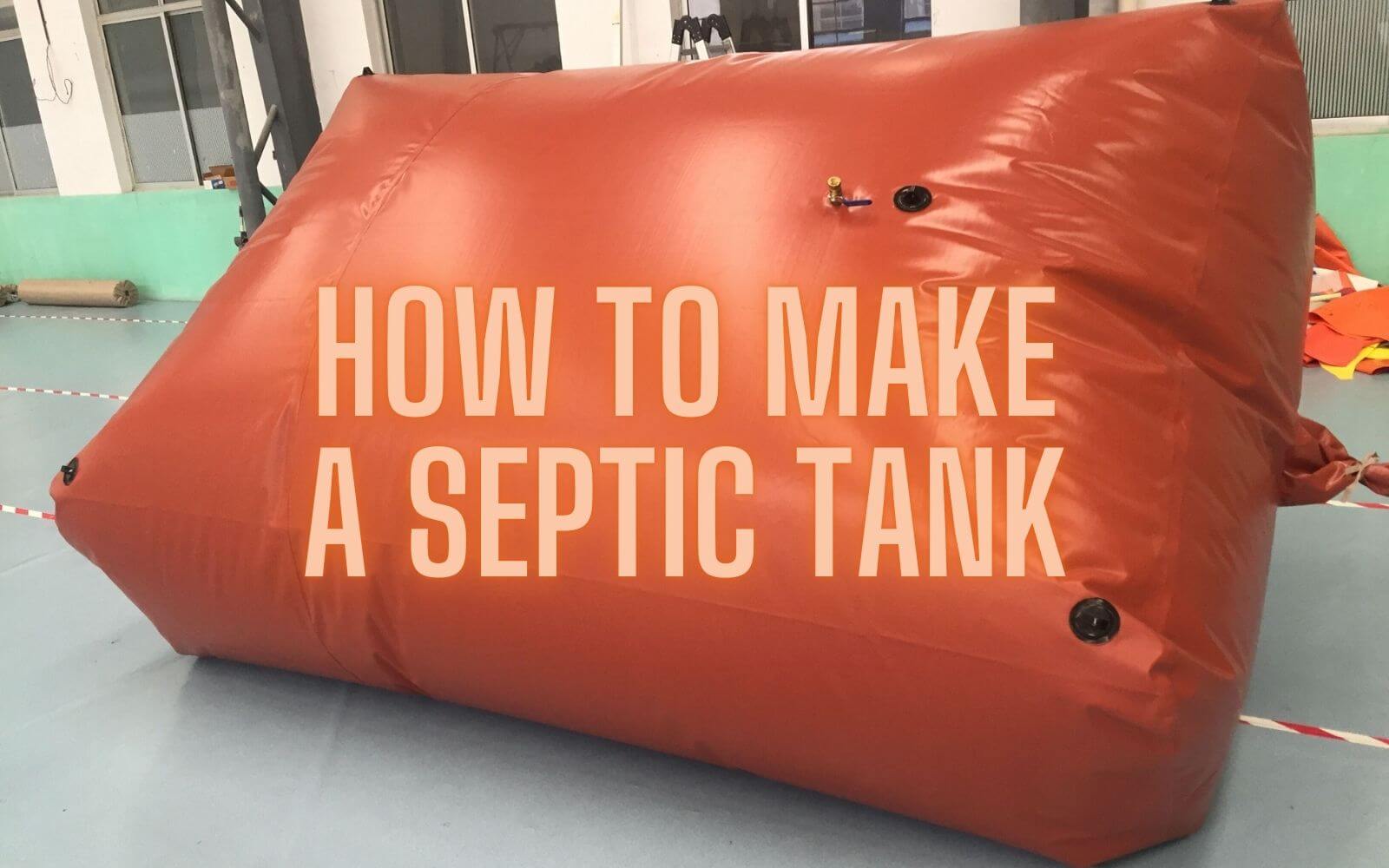HOW TO MAKE A SEPTIC TANK
When it comes to constructing a septic system, one of the most critical decisions is choosing the right septic tank. Traditional septic tanks, typically made from concrete or rigid plastic, have long been the standard. However, advances in material science have introduced a new contender: customizable flexible PVC septic tanks. This innovative option not only simplifies the construction process but also offers numerous benefits that make it an ideal choice for DIY enthusiasts. In this article, we’ll explore the advantages of using flexible PVC septic tanks and guide you on how to make a septic tank that meets your specific needs.
Flexible PVC septic tanks are made from robust, durable polyvinyl chloride that can easily customize to mold and adjust to fit specific spaces and requirements. Unlike rigid tanks, these customizable solutions can adapt to unique site conditions, making them highly versatile and efficient. The flexibility of PVC allows for easy transportation, installation, and maintenance, setting them apart from their more cumbersome counterparts.
Ease of Installation
One of the primary benefits of flexible PVC septic tanks is their ease of installation. Traditional tanks are often heavy and require specialized equipment and professional labor to install.
In contrast, flexible PVC tanks are lightweight and can operate by few people, reducing the need for heavy machinery and lowering overall installation costs, including the tank cost , shipping fees, and labor spends.
This makes them an excellent choice for DIY projects, allowing homeowners to take control of their septic system installation with minimal hassle.
Customizable Design
Flexible PVC septic tanks can be customized to fit specific dimensions and shapes, making them suitable for a wide range of applications.
Whether you have a small backyard or an oddly shaped lot, these tanks tailor to fit perfectly. Customization also extends to the capacity of the tank, ensuring that it meets the exact wastewater needs of your household. This flexibility is particularly beneficial for DIYers who need a solution that can adapt to their unique site conditions.
Cost-Effective
Constructing a septic system can be a significant investment, but flexible PVC septic tanks offer a cost-effective alternative.
The materials are generally less expensive than traditional options, and the ease of installation reduces labor costs. Additionally, because these tanks are lighter, transportation costs are also lower.
Overall, choosing a flexible PVC septic tank can lead to substantial savings without compromising on quality or performance.
Durability and Longevity
Despite their flexibility, PVC septic tanks are incredibly durable. They are resistant to corrosion, cracking, and other common issues that affect traditional tanks. This durability translates to a longer lifespan, for common usage, the serve life can be over 10 years, reducing the need for frequent replacements or repairs.
The robust nature of flexible PVC ensures that your septic system will remain reliable for years to come, providing peace of mind and long-term value.
Eco-Friendly Option
Flexible PVC tanks are also an eco-friendly choice. The material is recyclable, and the production process has a lower environmental impact compared to concrete or traditional plastics.
Moreover, the ability to customize the tank size and shape means you can create a system that is efficient and minimizes waste. By opting for a flexible PVC septic tank, you are making a sustainable choice that benefits both your home and the environment.
Simplified Maintenancein
Maintaining a septic system can be a daunting task, but flexible PVC tanks simplify this process. Their smooth surfaces make cleaning and inspection easier, and the customizable design allows for easy access to critical areas.
Regular maintenance is essential for the longevity of any septic system, and the convenience offered by flexible PVC tanks ensures that this task is manageable, even for DIY homeowners.
Creating a septic tank with flexible PVC is a straightforward process that can be accomplished with some basic tools and a bit of planning. Here’s a step-by-step guide:
Assess Your Needs:
Determine the size and capacity requirements for your septic tank based on the number of occupants and water usage in your household.
Select the Location:
Choose an appropriate site for your septic tank, ensuring it is away from water sources and has good drainage.
Design the Tank:
Work with a supplier to customize the size and shape of your flexible PVC septic tank to fit your specific needs.
Prepare the Site:
Excavate the area into a pool where the tank will be installed, making sure the ground is level and free of sharp objects that could damage the tank.
Install the Tank:
Place the flexible PVC tank in the excavated area, ensuring it is properly aligned and secure. Connect the inlet and outlet pipes according to your design specifications.
Backfill and Cover:
Once the tank is in place, backfill the area with soil, making sure to compact it firmly around the tank. Cover the tank with a layer of soil and vegetation as needed.
Regular Maintenance:
Perform regular inspections and maintenance to ensure the system operates efficiently. This includes checking for leaks, cleaning filters, and monitoring the tank’s capacity.
Flexible PVC septic tanks represent a significant advancement in septic system technology, offering numerous benefits for DIY enthusiasts. Their ease of installation, customizable design, cost-effectiveness, durability, eco-friendliness, and simplified maintenance make them an excellent choice for modern septic systems. By understanding how to make a septic tank with flexible PVC, homeowners can enjoy a reliable and efficient wastewater solution tailored to their unique needs.








